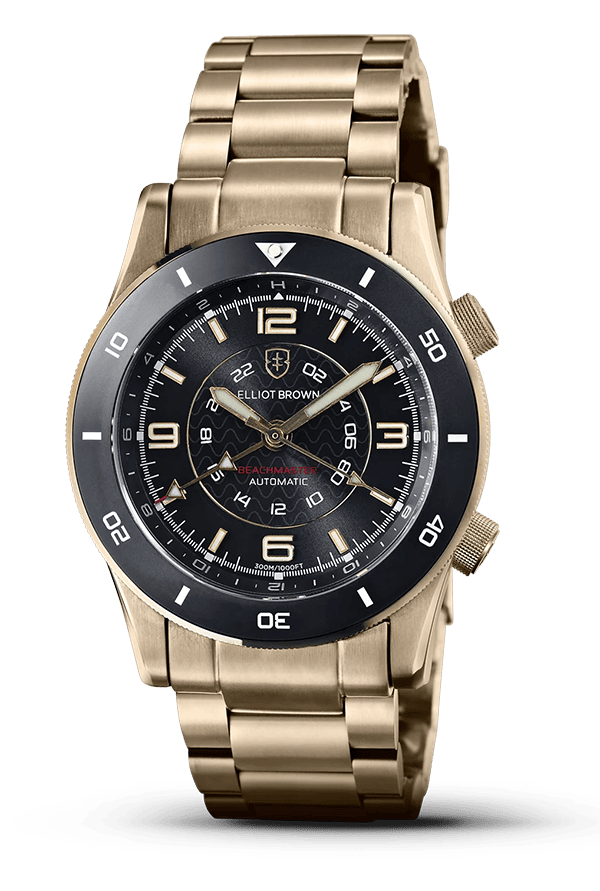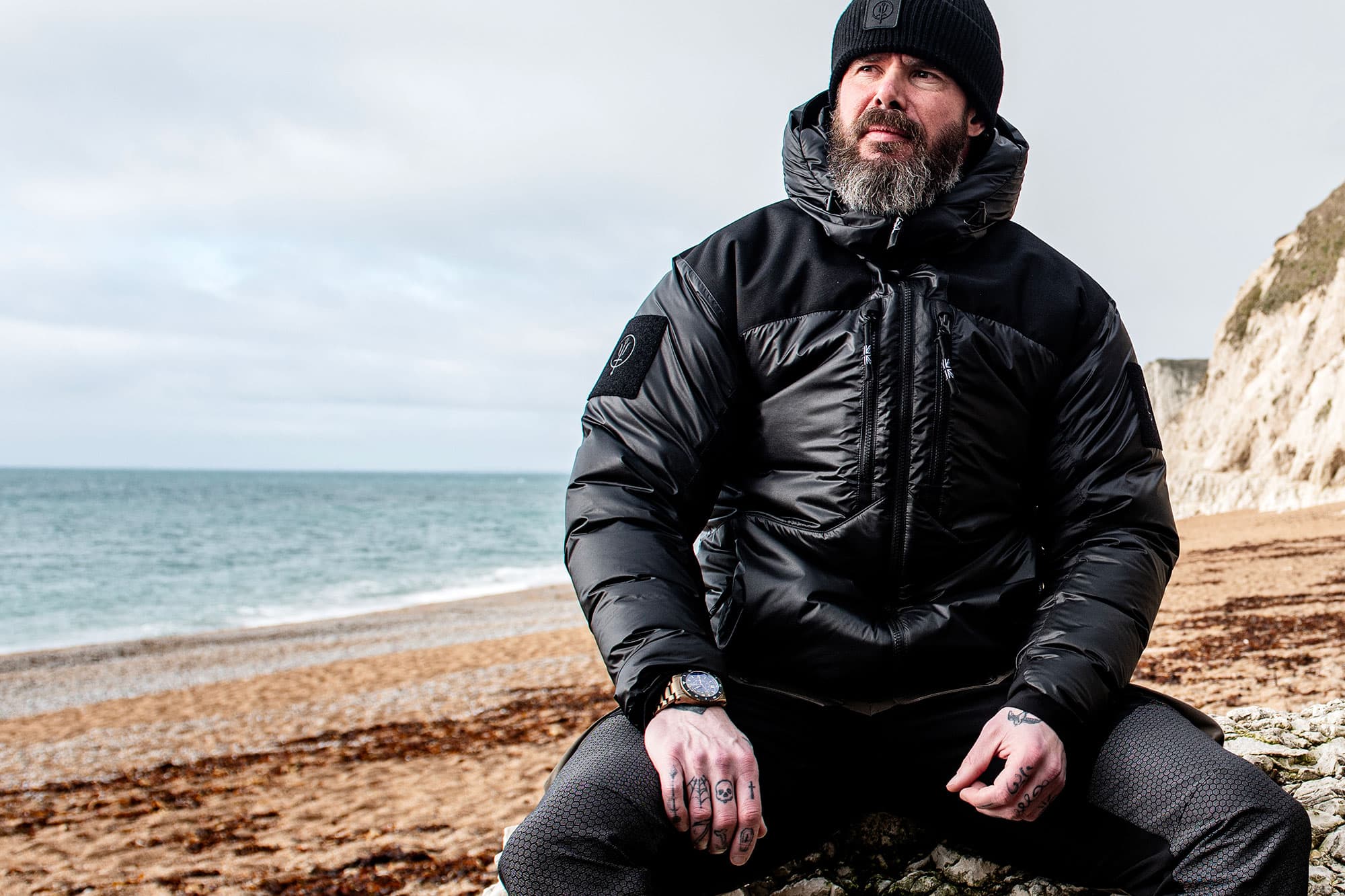
For this edition of Tool/Kit, we had the distinct opportunity sit down with adventurer, trainer, and Elliot Brown ambassador Jonny Pain. We were pleasantly surprised by his thoughtfulness, humility, and extremely practical approach to watches. Jonny takes us through his most recent adventure in the Arctic and how the Elliot Brown Beachmaster became a mission critical companion.
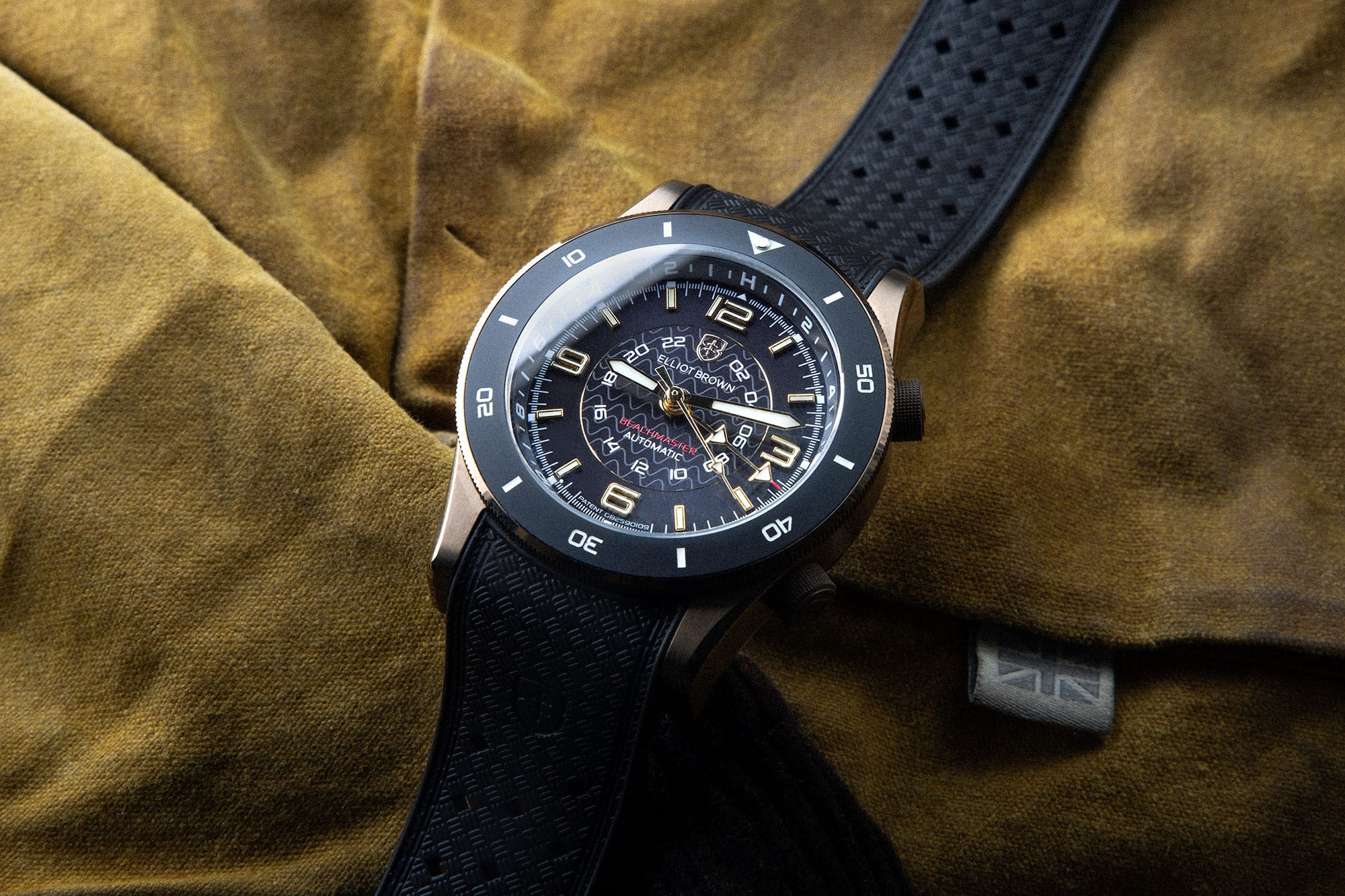
Thanks so much Jonny for joining us on this next edition of Tool/Kit. Can you tell our readers who you are, a bit about your background, and what you’re up to these days?
I’m a father of four and that comes before any other thing really. I run a business, from here in Scotland, coaching people all over the world in various different pursuits. We lean into a hybrid methodology, where we really try to encourage people to utilize strength training alongside endurance training to better themselves overall. That’s the nature of the business, but my background is multifaceted. I’ve coached combat sports to a very high level, focusing on strength and conditioning. I’m also a self-protection trainer for both military and police units.
I’m also lucky enough to have a lot of opportunities for adventure and expeditions, where I test products for different companies. Over the past few years, I’ve been pushing the envelope as far as I can in terms of creating my own adventures. A phrase I like to use is: seeing if I can meet myself out there somewhere and discover what questions that new version of myself has to ask me.
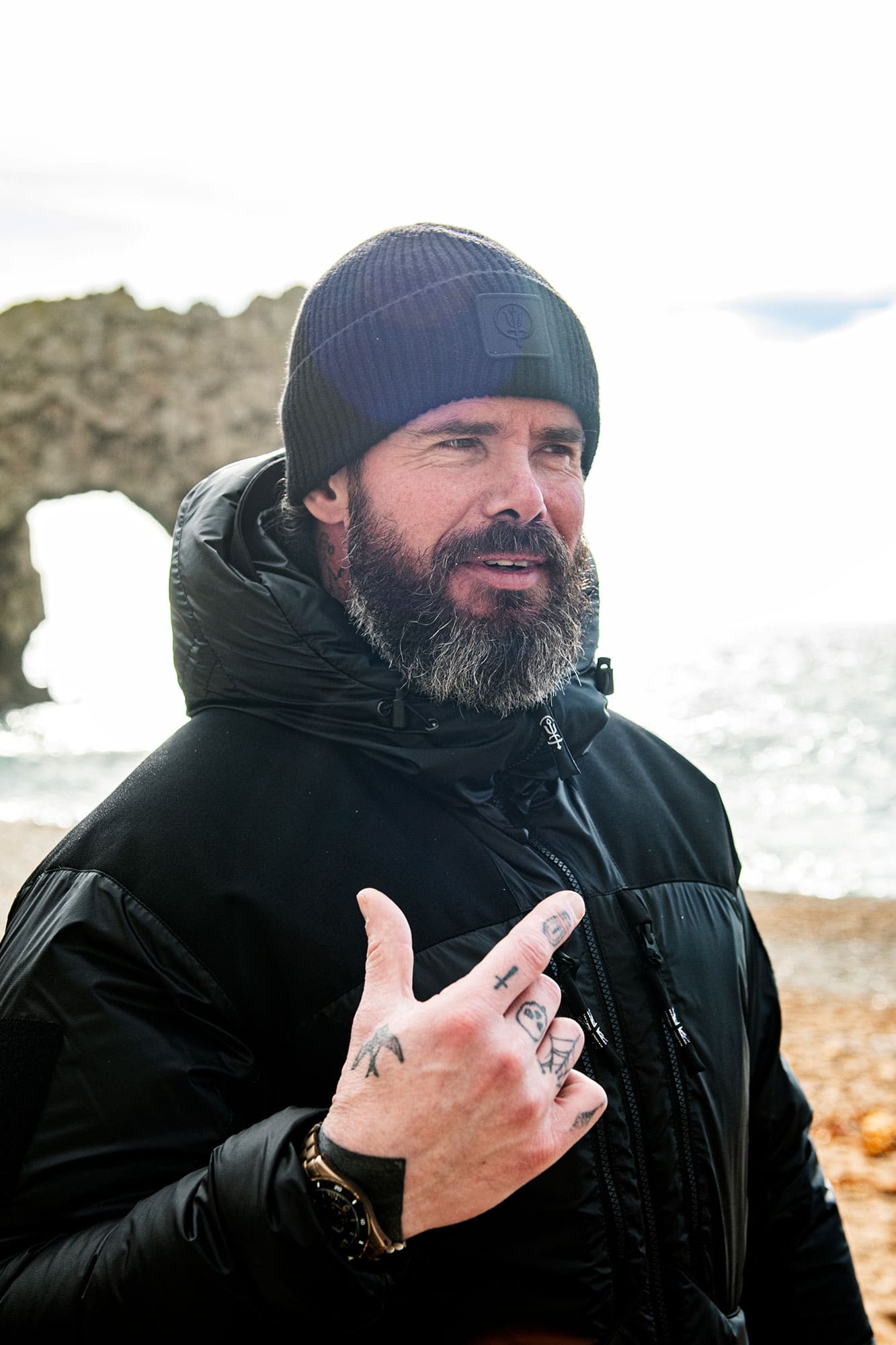
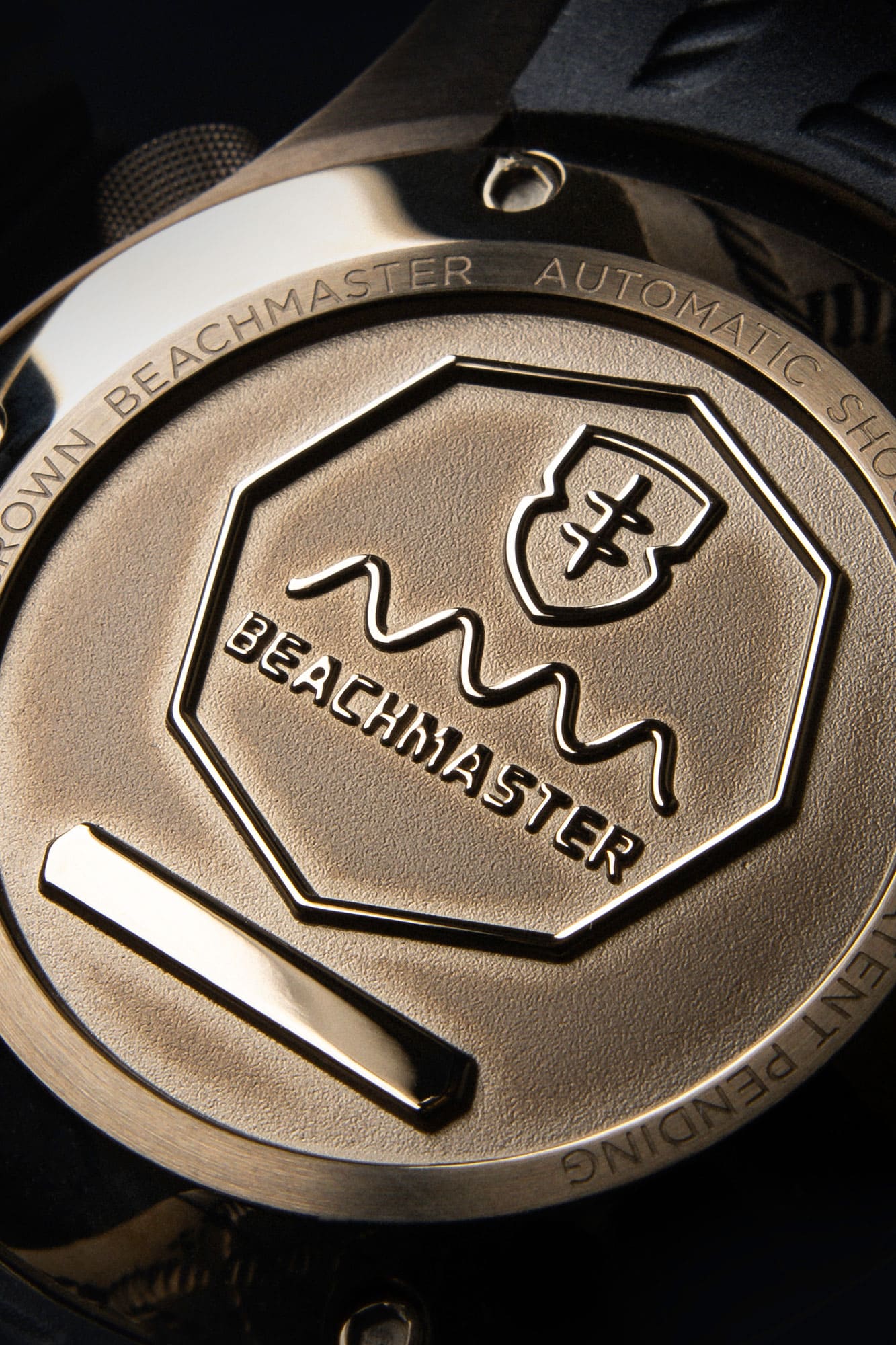
As a professional adventurer, what’s been your favorite expedition?
It’s really hard to pick out a favourite. In each adventure I undertake, I can pinpoint moments that are just horrific, and some moments that are points of elation that I’ll hopefully never forget. But I think my most recent adventure, a 250-mile self-supported trek across the Arctic Circle, was very memorable. It was five days across the arctic tundra of Sweden, working hard every day. Experiencing the absolute isolation in that undiscovered wilderness out there in the Arctic Circle was a real privilege. It’s something that I hope to revisit as soon as I can. I think that complete isolation from civilization, from everybody, for as far as was conceivable, was one of my greatest adventures.
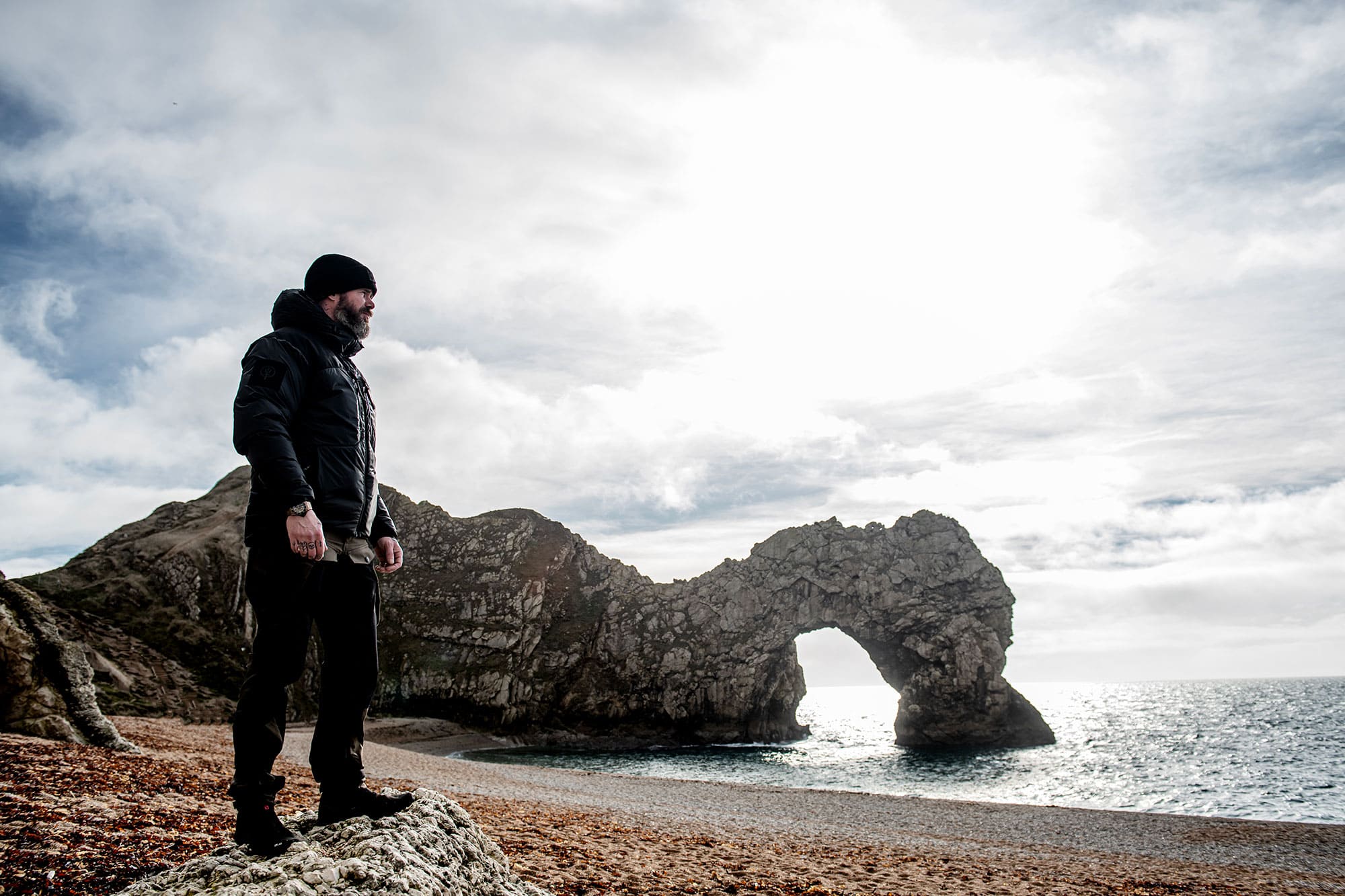
Worn & Wound speaks directly to watch enthusiasts who think of watches as a critical piece of their kit. Can you talk a bit about the importance of time and timekeeping on your expeditions?
Yeah, yeah. I’ll use the Arctic as an example as it’s a great example of the importance of setting and keeping time. It’s critical to know the distance I’ve traveled, the pacing I’m using, whether or not I’m close to a checkpoint somewhere where I can set up a tracker, and when to tell people I’m safe. When you’re walking across a frozen Arctic lake all by yourself, you might use the tree that you last saw as a reference point. But the lakes are so vast that you can look back and the tree looks like it’s right where it was an hour ago. And the horizon that you’re aiming for just never ever comes.
So it’s critical to have some kind of time tracking device that allows me to know how long I’ve traveled, because you can convince yourself you haven’t moved in any direction at all. Yeah, so to have something that told me, yes, you have moved, was very, very useful because it kept me focused, steady, and sane. Because frankly, it’s very easy to lose your wherewithal in an environment like that.
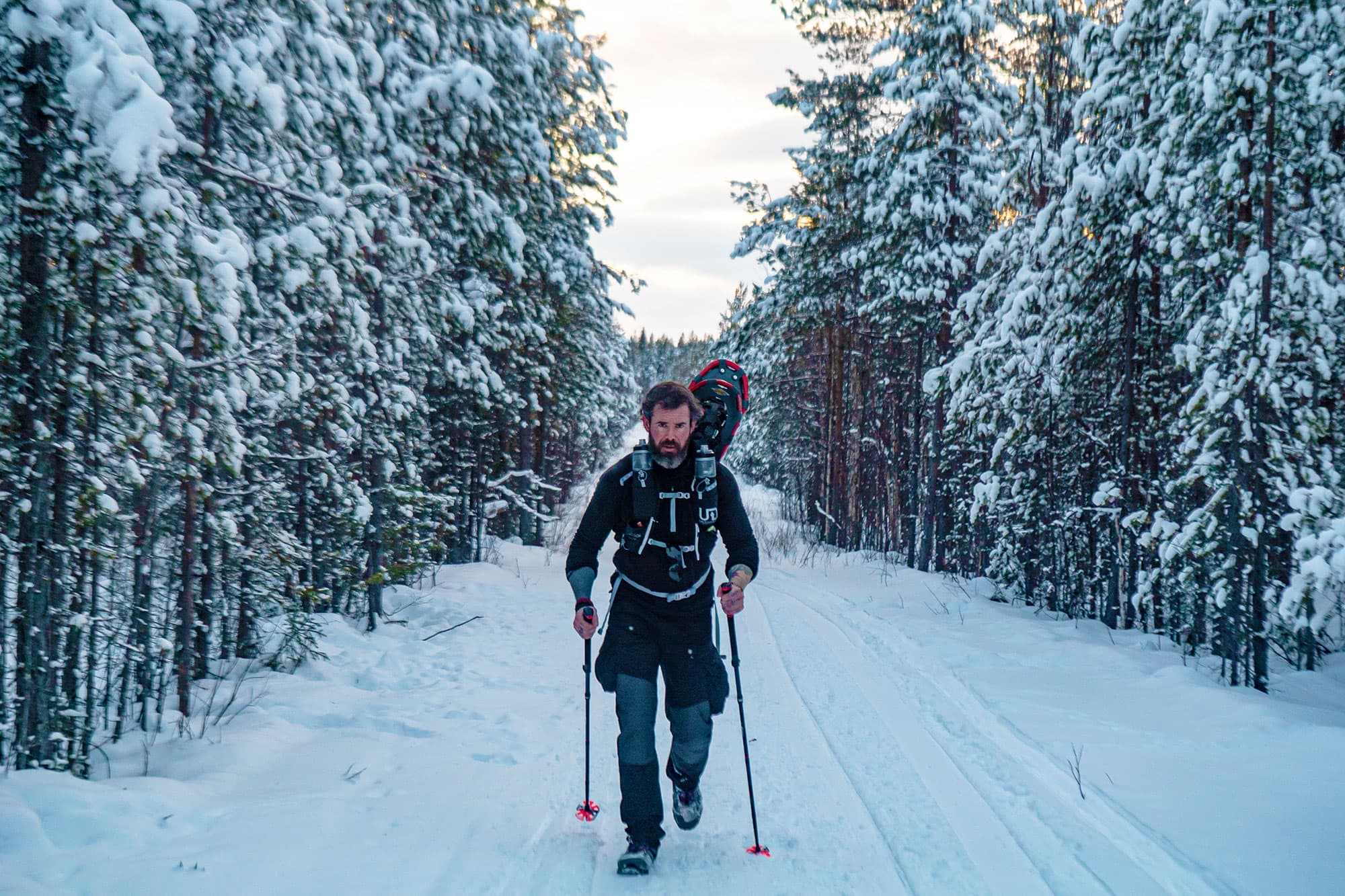
Can you tell us about your go-to watch and what is it about the Elliot Brown Beachmaster that ticks so many boxes for you?
We use the data from smartwatches to great effect when training athletes. I don’t want to work against those kinds of products. Heart rate data is invaluable, for example. But what I’m always keen to say to athletes is, now and again, take the digital watch off. Allow yourself to feel what your heart rate is. Allow yourself to feel what pace you’re running. And for me, when I’m out on the expedition I’ve been training for, I want to feel the environment, feel the experience, feel the adventure. So having the Beachmaster on my wrist, with its double timing system, has allowed me to immerse myself in these extraordinary environments. I’m experiencing adventure rather than interacting with this constant feed of data. Otherwise, I might as well be sat in an office, you know, looking at a laptop.
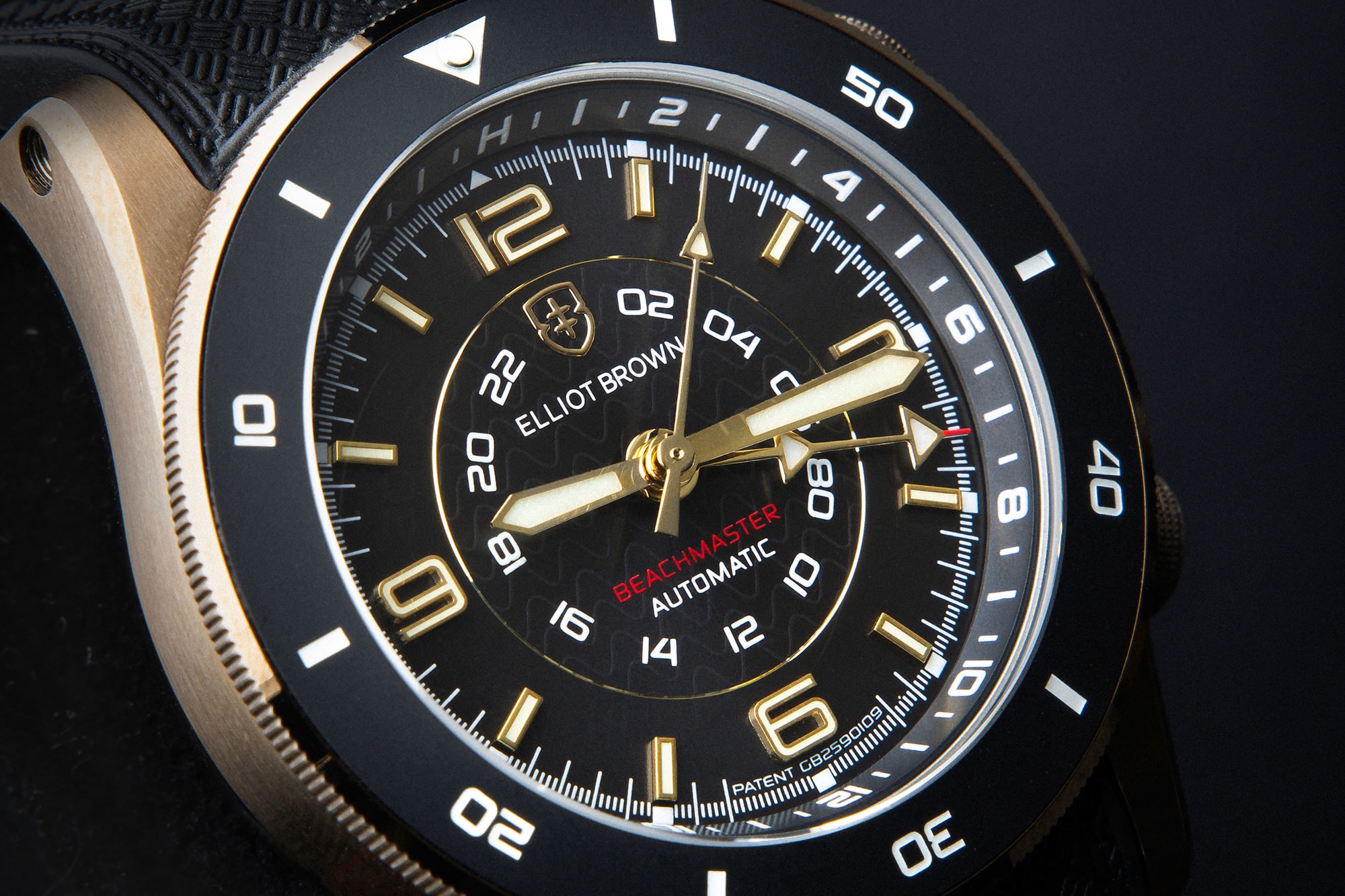
The Beachmaster was a really interesting concept to me, because it’s an analog watch that speaks to me from a very practical perspective. It has an internal rotating bezel and the usual diver bezel. This was intriguing to me because they double up and allow for a specific type of countdown functionality. The opportunity to have these two timing mechanisms—one being a countdown mechanism I can set for a specific time when I need to get ready to move. Let’s say that I have a start point for the next day, I want to get up at five o’clock or whatever it might be. But then I can set a second timer for maybe a first pit stop or a first protocol marker. Now I’ve got these kinds of complementary timing functions working in tandem to help me operate within different elements.
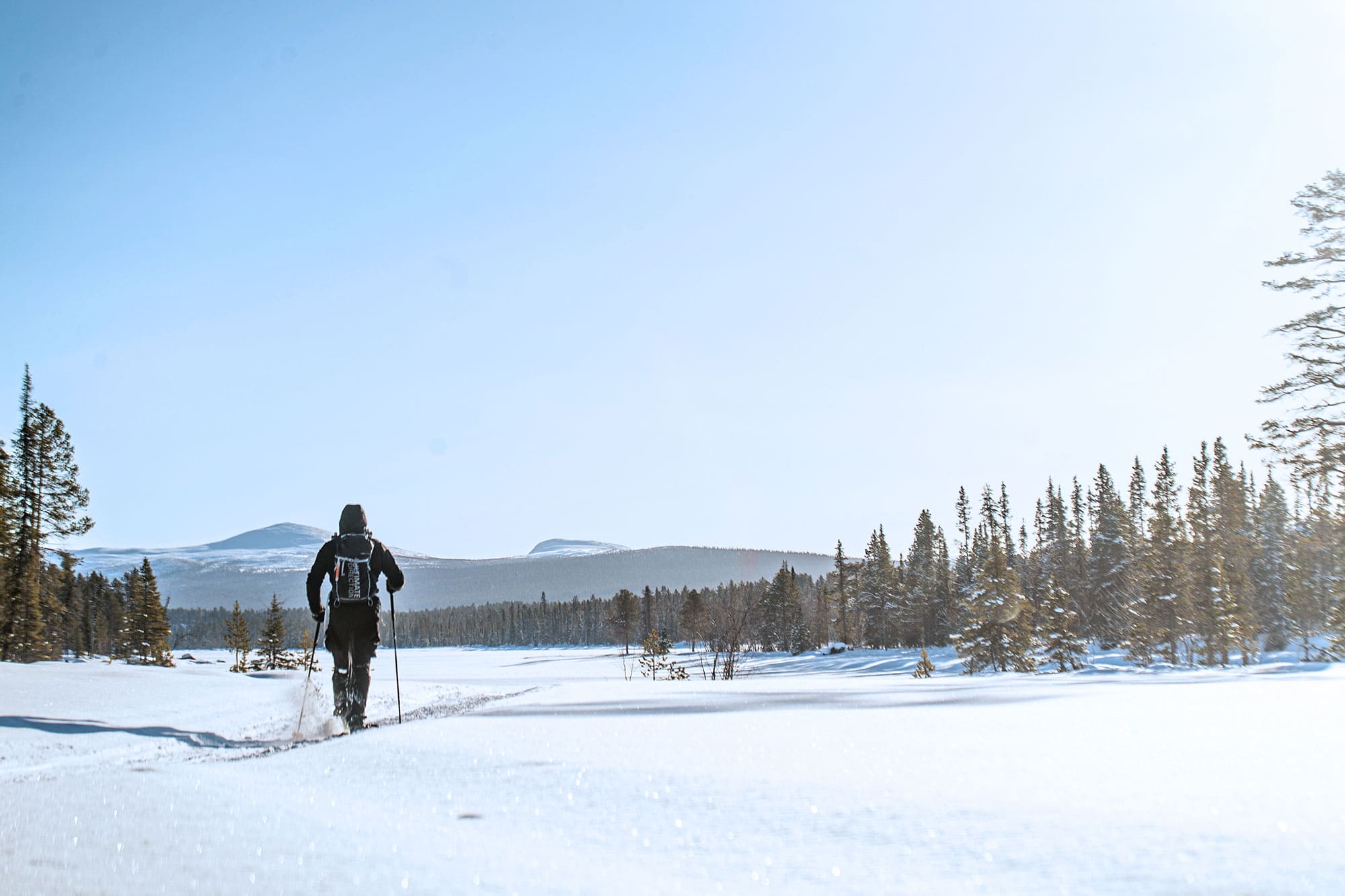
Follow up question, is there a time when your Beachmaster became an essential part of a challenge’s success?
There were a few things the Beachmaster did for me while I was out there in the Arctic. After I set the initial start time each day with the internal bezel, I would use the diver’s bezel and set a 20-minute mark for myself. So every 20 minutes, I would go through one of two administrational duties. One was to check it to make sure it wasn’t freezing and two was to feed myself and make sure that my nutrient intake was constant and regular. Then I would reset it for another 20 minutes and so on.
So I gave it a practical job. What I found was that by giving it a practical job to trigger tasks and things to do—when I was touching, spinning, and playing with it—I had this kind of tactile moment that would anchor me. It immediately made me smile. I’ve started to describe the watch as being a bit of a talisman. It’d be no different to having a lucky rabbit’s foot in your pocket as that self-comforting, anchoring object.
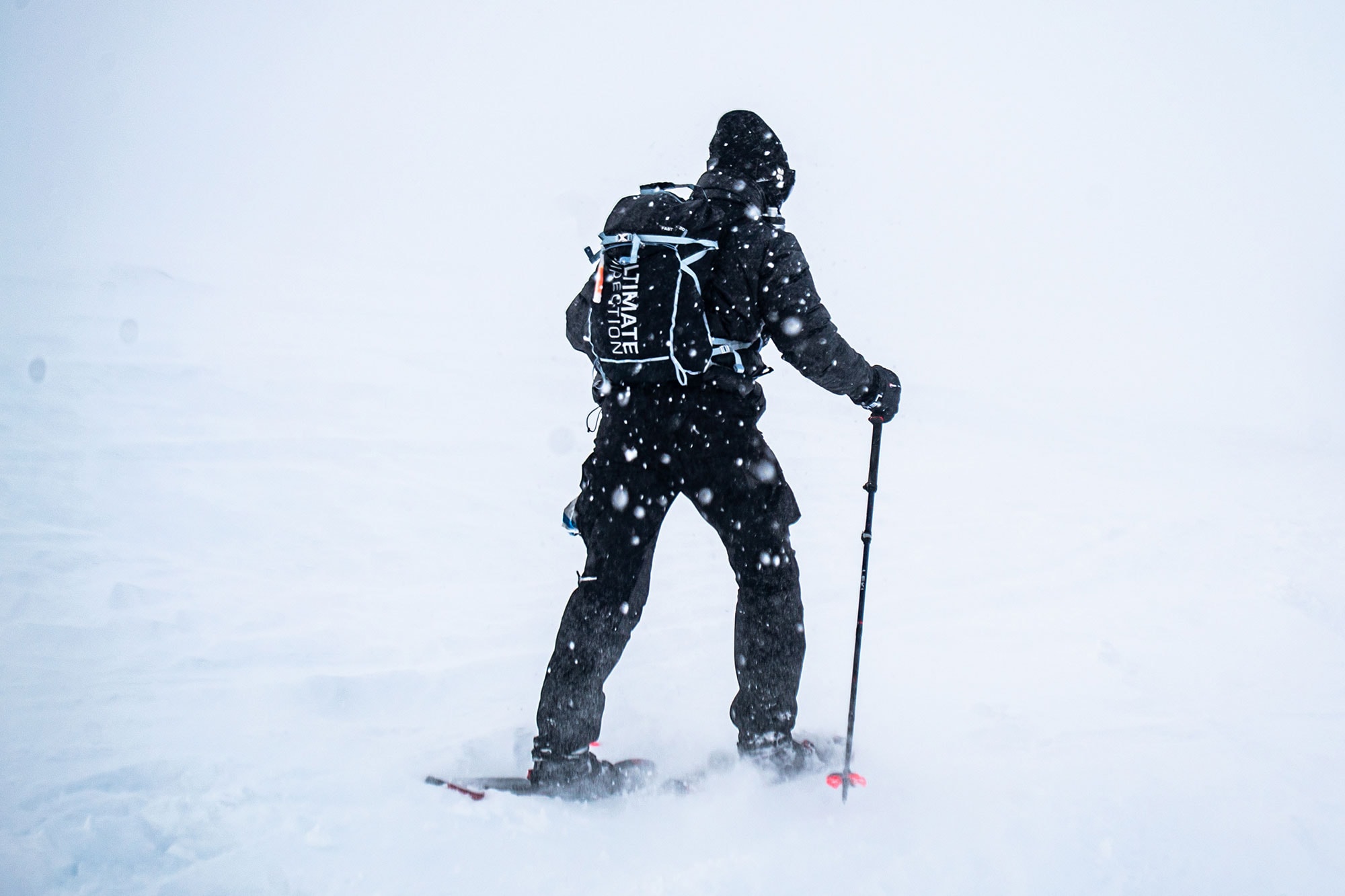
It’s interesting, there are traditional watch brands and there are traditional gear brands. Elliot Brown feels a lot more like a gear brand than a watch brand. What is it about a brand like Elliot Brown that draws you to it and gives you the confidence to rely on it?
When I received my first Elliot Brown watch, there was a note inside from the team saying… do not look after it. And I thought that was just perfect. The confidence for them was to say, listen, you can do what you want. If you take this off and throw it down, or you happen to clunk it while dragging yourself up a rock face or whatever, that doesn’t matter. They’re built to last, which ultimately for adventure, that’s a huge component of trust, isn’t it?
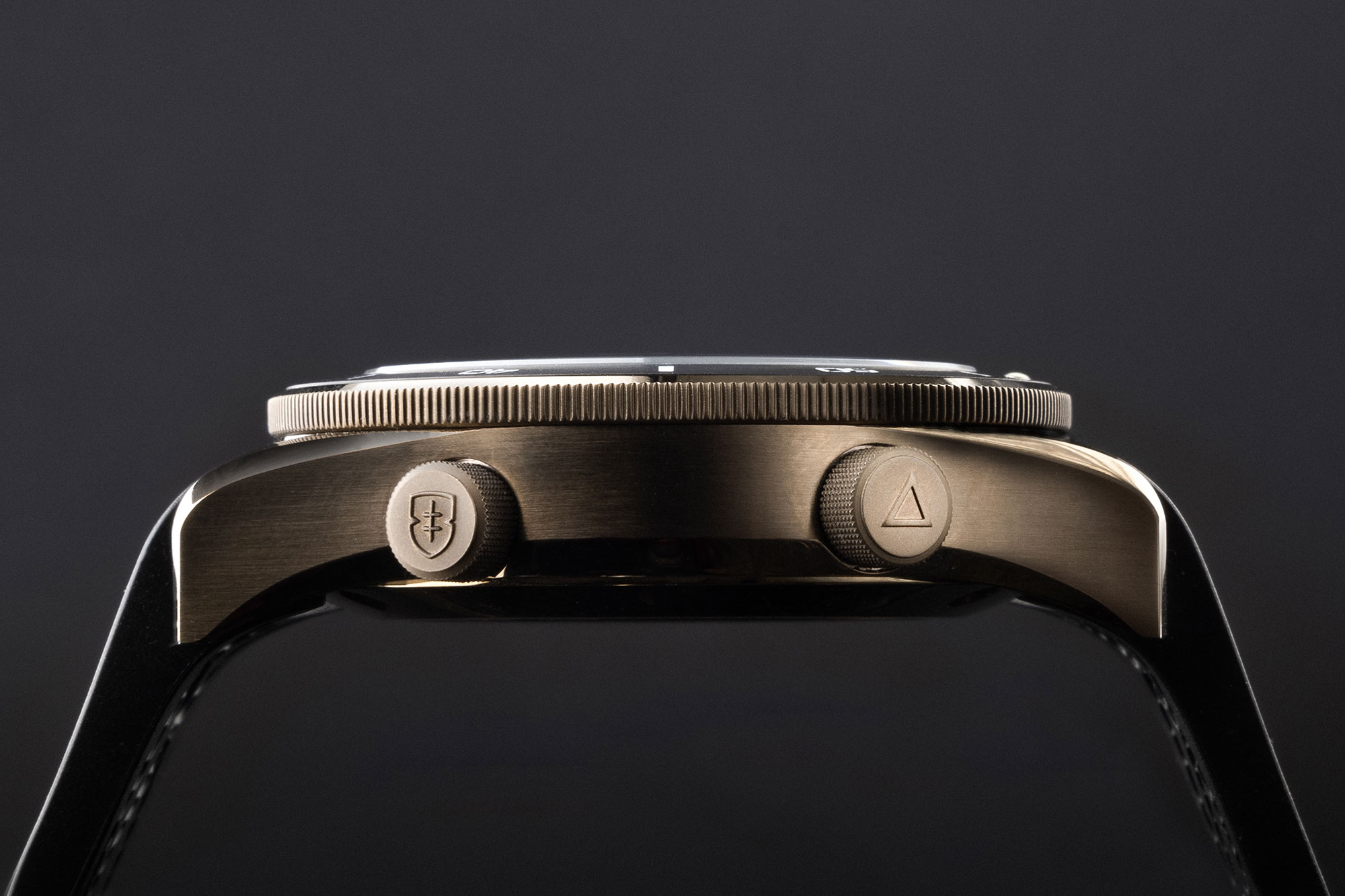
As much as we love watches, we also love all the gear that surrounds that watch in order to create a complete kit. Can you tell us what a few of your other go-to pieces of essential gear are?
Very much like Elliot Brown, I seek out brands producing quality items that are utilitarian in design. They do what they’re supposed to do, and they do it well. I also want it to look good, but that’s a secondary function. I just want to know that when I go out on an adventure, say the Arctic or anything else, that the kit’s not going to fail. For example, a company called ThruDark has outfitted me from top to bottom to put their products through their paces. They are ex-special forces operatives who saw flaws in the kit that were being given. They’re like, well, we can make this better. And now I’ve had the opportunity to work through their full range of environmentally-test clothes, which I can easily recommend.
For shoes, I use INOV8 Roclite Gore-Tex hiking shoes with gaiters. This has worked better than boots for me, even across the Arctic. There are a couple other things that I’ll always take with me. I, a good boy scout, will always have a knife where I’m allowed. And I recently got a Gore-Tex tape for any splits that I might get on the kit. Perfect for on-the-hop repairs.
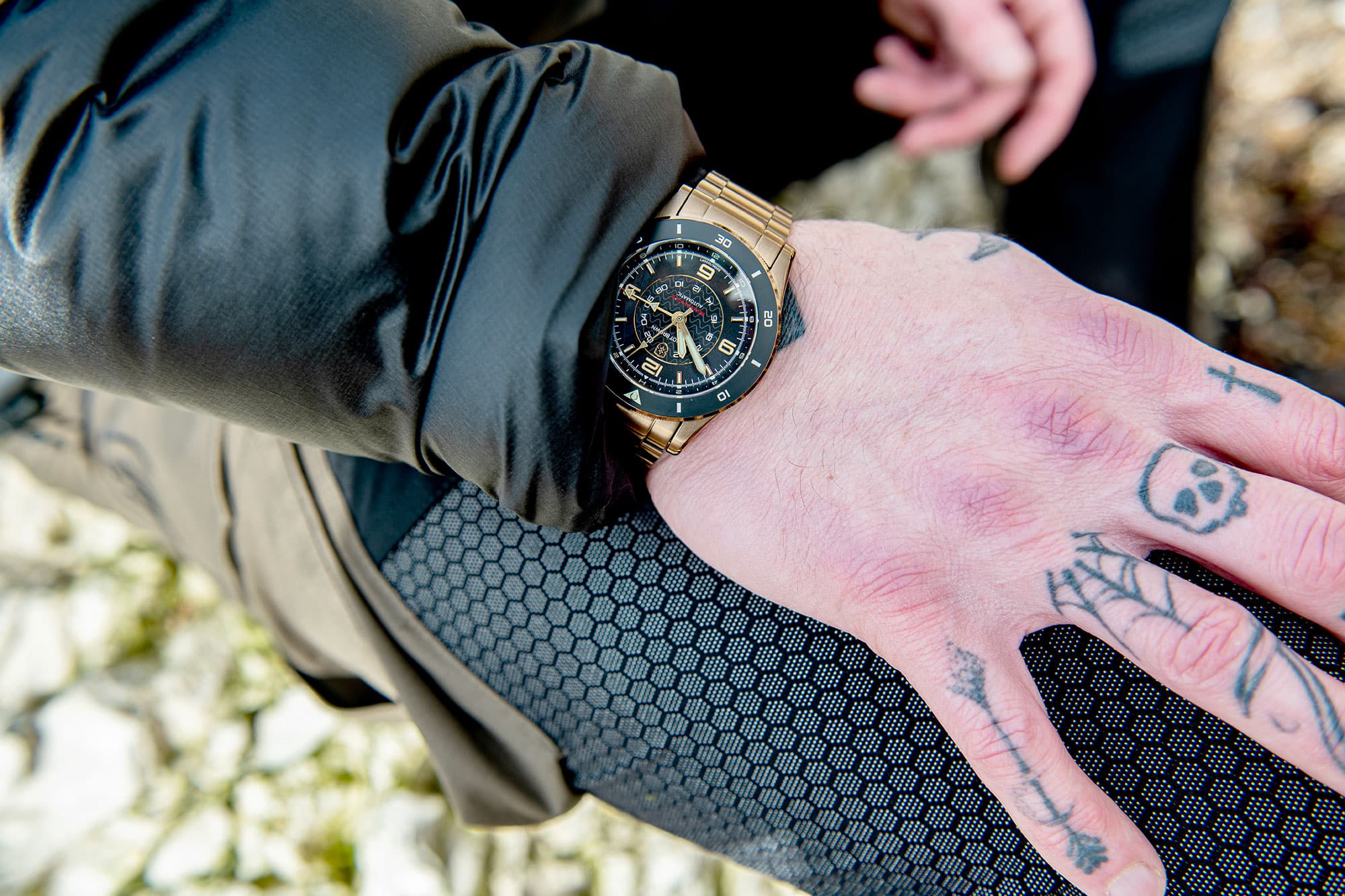
Clearly, you are a man of action. When you’re not in the midst of an adventure and you look down at your watch, what feelings does that conjure?
As I get older, I’d say I’m better at taking the moment and being present. When I look at this watch in particular, it makes me think of adventure. It’s just a watch, but I’m inclined to think that there’s more there, because it truly makes me think of getting back out there.
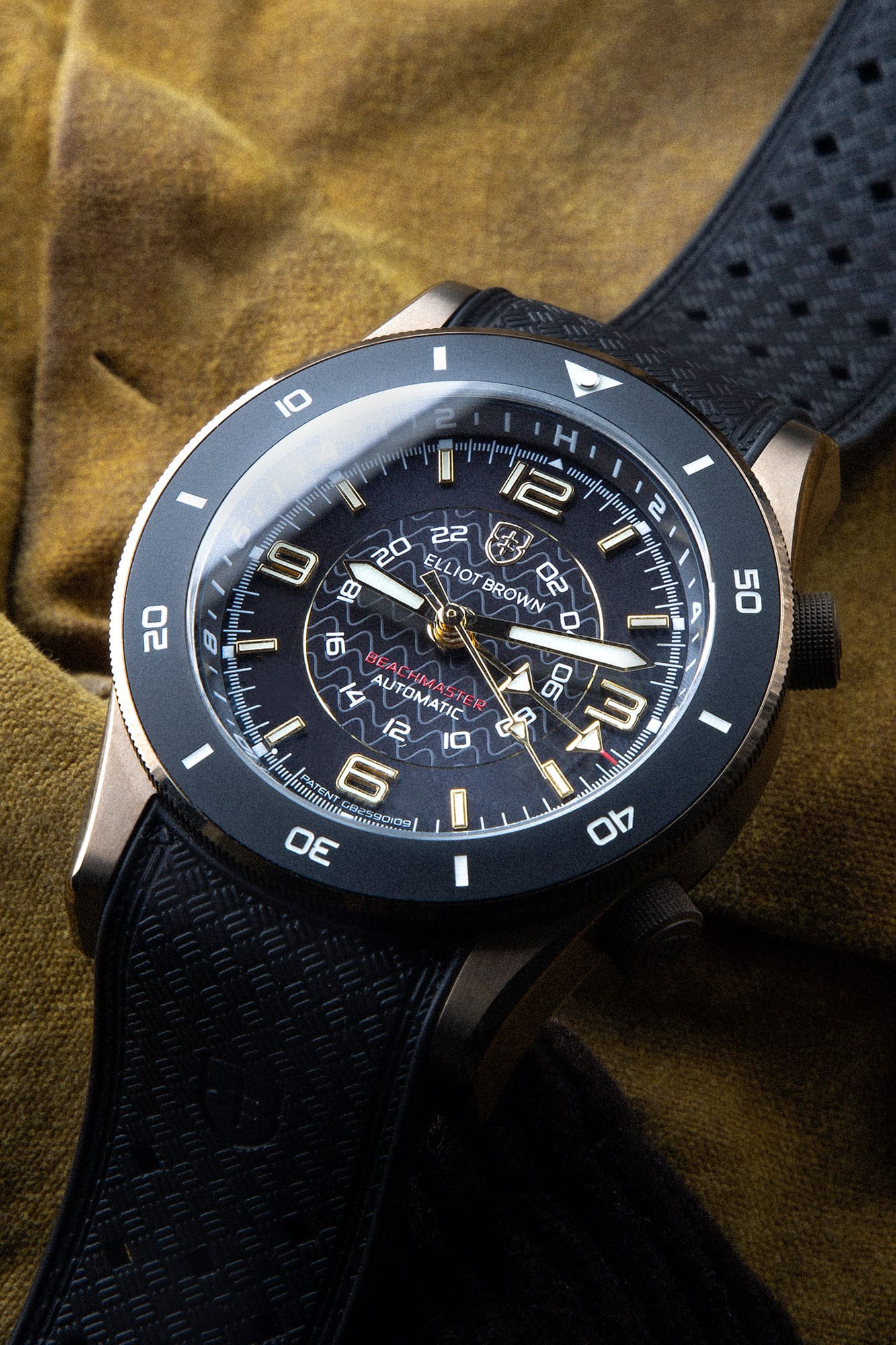
SPECIFICATIONS
- Swiss made, high-performance Sellita SW330-2 automatic movement with 56 hr power reserve and independently adjustable 24hr/GMT function
- 40mm satin brushed PVD bronze stainless steel case with polished detailing
- Subtle matte wave ‘amphibious assault’ graphic in the dial centre
- Deep matte black dial with 3D applied indexes
- Waterproof to 300M/1000ft; individually tested
- Timing graphics: S2 white Super-LumiNova, glows blue
- Hours, minutes, seconds: X1 C3 green Super-LumiNova, glows green
- External matte black ceramic unidirectional 120 click rotating bezel with X1 BWG9 white Super-LumiNova
- Bi-directional rotating Internal bezel with click-lock ceramic ball bearing mechanism and X1 BWG9 white Super-LumiNova
- Scratch resistant domed sapphire crystal with anti reflective coating
- Custom hobnail knurled crowns at 2H and 4H
- Easy change screw in strap bars with socket heads
- Personal laser engraving included
- Solid link bronze PVD stainless steel bracelet with ratchet divers extension + rubber divers strap with deployant buckle also included
- Bespoke Beachmaster challenge coin
- Patent No. GB2509109
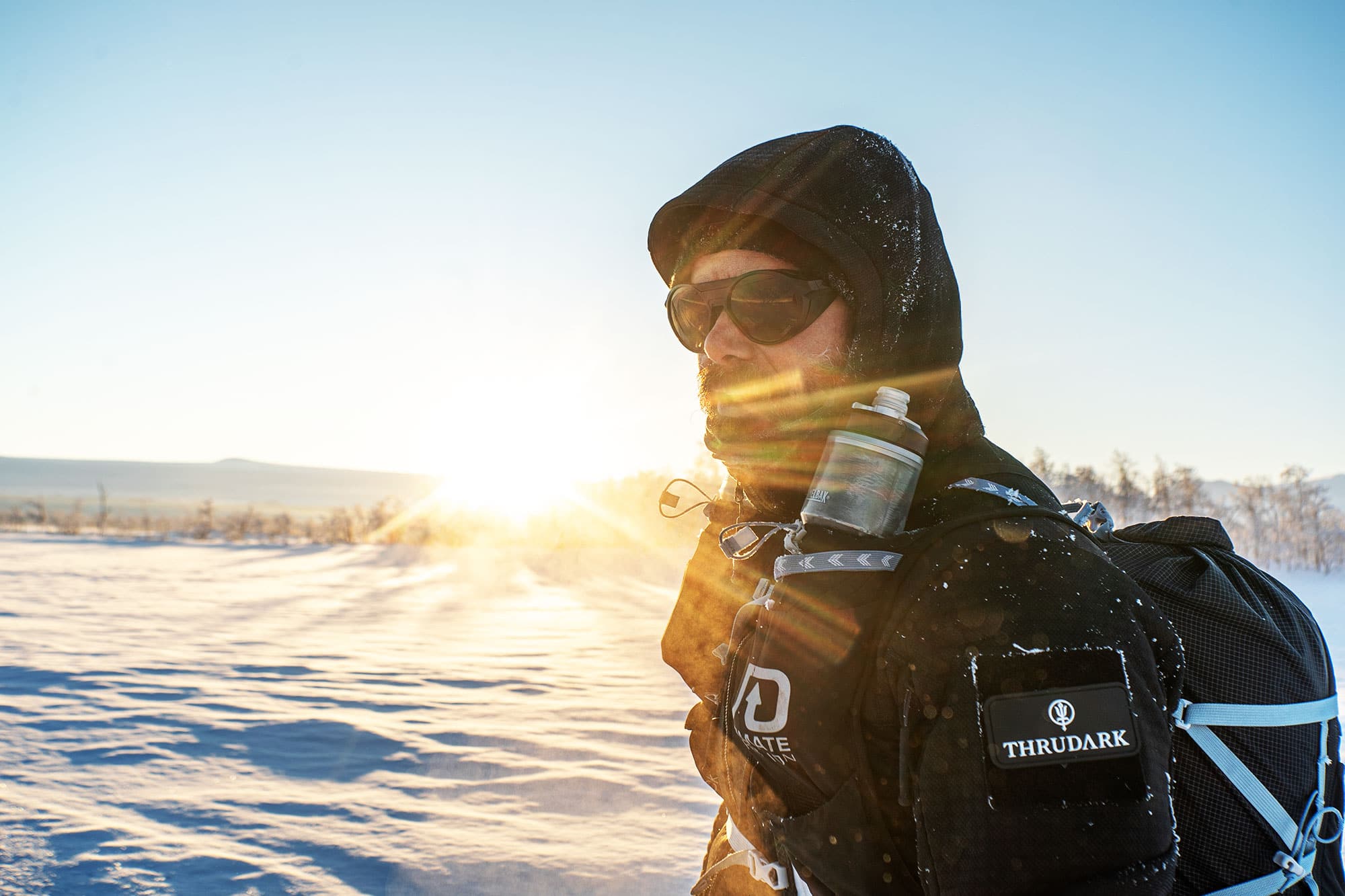
What is your dream adventure and what watch and gear would you bring along for the ride?
So I have an idea in my mind that I want to go west to east across Iceland, entirely self-supported, and create a kind of a fastest known time. Somebody’s done it before and I feel like I could beat that time, but really that’s arbitrary. The goal is doing it under my own steam, on my own, in an environment that I conceive of as being beautiful. That speaks very much to me. Experiencing these different cold extremes is about the challenge, about seeing how far I can go. But some of it is just about being—about immersing myself in the moment. Oh, and I’d bring the Beachmaster, of course!









 Featured Videos
Featured Videos






